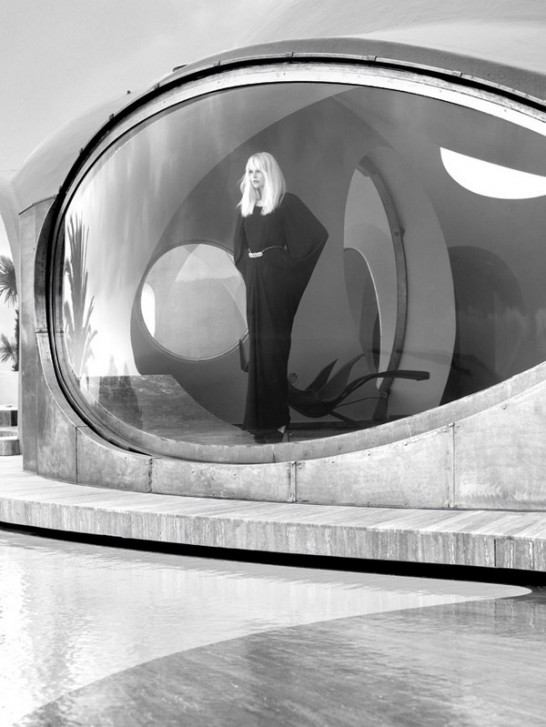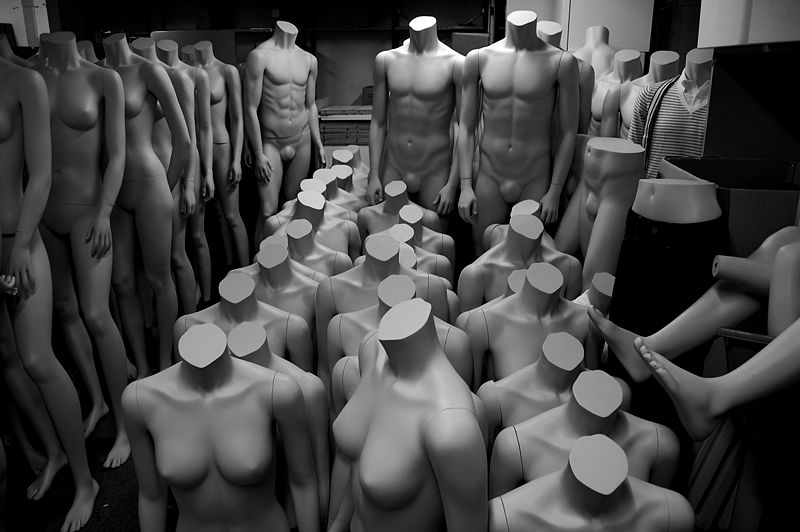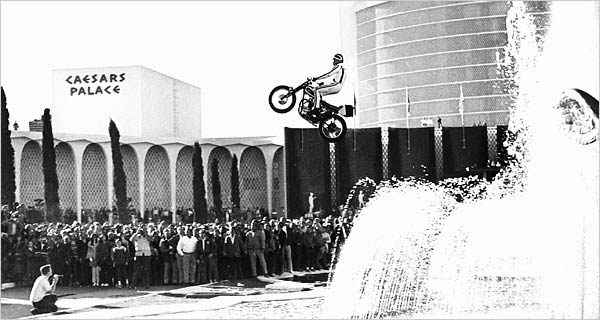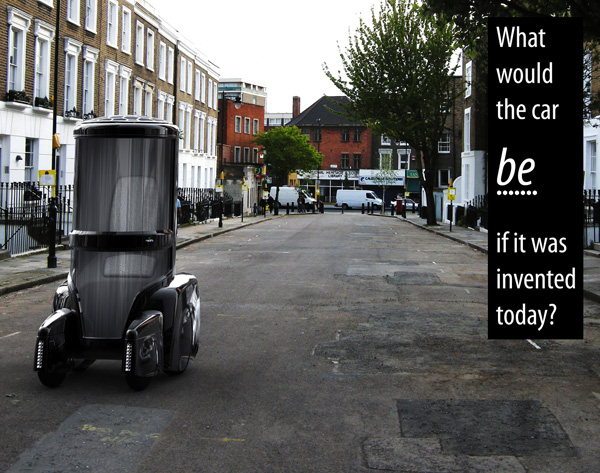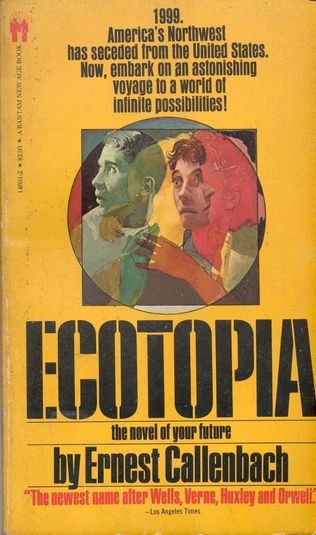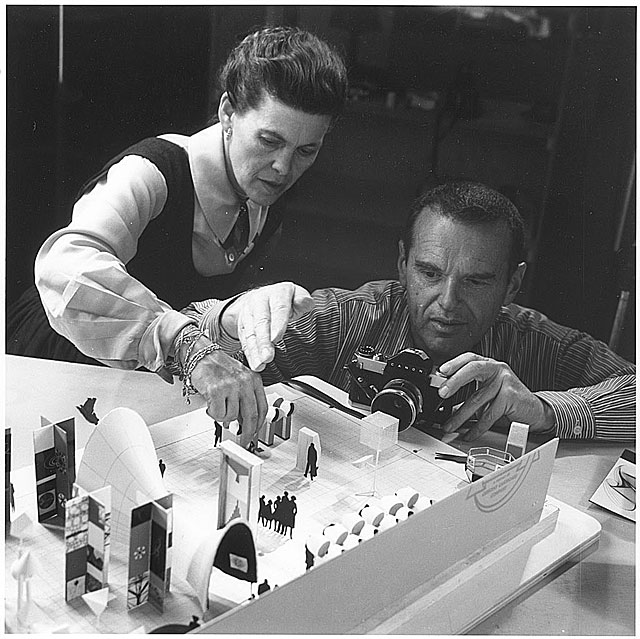
It wasn’t her most unusual assignment, but Oriana Fallaci spent a year focused on NASA in the mid-60s when the space race was in high gear. The result was If the Sun Dies, a book-length mélange of reportage and personal impressions about humans hurtling into the future. Fallaci was known for her ferocious Q&A interviews, but she was also a brilliant prose writer. A bigoted ass at times, but really brilliant. Here are the first three paragraphs from her book about life among the boldest rocketeers the world has ever known, in which she travels to Los Angeles to do research and finds the city to be odd and denatured:
“You couldn’t see the stone, so thick and lush was the grass. I tripped over it and fell flat, alongside the road. Nobody came to help me. But then who could? There was nobody walking along the road, nobody along the roads of the whole city. Nobody existed, nobody with feet and legs, with a body on his legs, a head on his body. Only automobiles existed, sliding by, smooth, controlled, always at the same speed, at the same distance, never a man inside, nor a woman. There were human forms behind the steering wheels, yes, but so straight they were, and still, that they could not be men or women; they were automatons, robots. Isn’t modern technology perfectly able to make robots identical to ourselves? Isn’t the first rule for robots ‘remember that you must not interfere with the actions of humans unless they ask you to’? And was I asking anyone to intervene? On the contrary. Stretched out on the grass by the roadside, my cheeks burning with embarrassment, I was only hoping that they wouldn’t notice me and laugh at me. And the robots obeyed, sliding by, smooth and controlled, always at the same speed, at the same distance, not even asking their computers whether the woman lying there was dead or alive and if she was alive why she wasn’t getting up. I wasn’t getting up because I had noticed something absurd. The grass didn’t smell like grass.
 I stuck my nose into it and sniffed. No, it didn’t smell like grass, it had no smell at all. I grasped a blade and tugged. No, it didn’t come out and it didn’t break. I scrabbled underneath with my fingernail, looking for a speck of earth. No, you couldn’t even get hold of a speck of earth. How odd. Yes, it was the color of earth, it had the consistency of earth. And the grass that was planted in it was the same color as grass, it had the consistency of supple fresh grass, even watered with an ingenious sprinkler system to keep it green and make it grow; my God, I couldn’t be delirious, dreaming, the grass was grass, yes, of course it…Was it grass? I sniffed it again. Again I grasped a blade between my thumb and forefinger and tugged. Again I scrabbled underneath with my fingernail, looking for a speck of earth, and like a dagger-thrust in my brain the doubt became certainty. The grass was plastic. Yes, and perhaps all the grass I’d seen there, the grass plots along the avenues, along the highways, in front of the houses, the churches, the schools, looked after by gardeners, watered, treated like real grass, grass that grows and dies, was all plastic. A huge shroud of plastic, of grass that never grows or dies, a mockery.
I stuck my nose into it and sniffed. No, it didn’t smell like grass, it had no smell at all. I grasped a blade and tugged. No, it didn’t come out and it didn’t break. I scrabbled underneath with my fingernail, looking for a speck of earth. No, you couldn’t even get hold of a speck of earth. How odd. Yes, it was the color of earth, it had the consistency of earth. And the grass that was planted in it was the same color as grass, it had the consistency of supple fresh grass, even watered with an ingenious sprinkler system to keep it green and make it grow; my God, I couldn’t be delirious, dreaming, the grass was grass, yes, of course it…Was it grass? I sniffed it again. Again I grasped a blade between my thumb and forefinger and tugged. Again I scrabbled underneath with my fingernail, looking for a speck of earth, and like a dagger-thrust in my brain the doubt became certainty. The grass was plastic. Yes, and perhaps all the grass I’d seen there, the grass plots along the avenues, along the highways, in front of the houses, the churches, the schools, looked after by gardeners, watered, treated like real grass, grass that grows and dies, was all plastic. A huge shroud of plastic, of grass that never grows or dies, a mockery.
 I jumped up as if I’d been stung by a thousand wasps, hurried back to my hotel, flung open my door of my suite and almost fell over the cactus plant that adorned the living room. It was a big cactus, green, lush, bristling with thorns, and on top there was a flower. I felt the flower, I bent it and twisted it. It remained intact. I poked my finger between the thorns, squeezed the fleshy part, hoping for a drop of liquid. I felt only the sponginess of rubber. I squeezed the thorns with both hands, desperately praying that they would prick me, that they would tell me I’d made a mistake. They only tickled me gently, the thorns were made of aluminum and rounded points. And the plant in the corridor? False, too. And the hedge in the garden? False of course. And probably those trees too around which there were never any flies or birds, every blade of grass, every branch, every leaf was false in this city where nothing green sprouted and grew and died. The daisies, the azaleas, the rhododendrons, the rose in that vase…The vase was on the TV and I approached it without hope. I gently removed a rose, raised it to my face, let it drop, and the rose went crack; it shattered on the floor in a thousand splinters of glass. On the floor a cold frost, a spark of light remained. I had reached Los Angeles, first stage of my journey into the future and into myself.”
I jumped up as if I’d been stung by a thousand wasps, hurried back to my hotel, flung open my door of my suite and almost fell over the cactus plant that adorned the living room. It was a big cactus, green, lush, bristling with thorns, and on top there was a flower. I felt the flower, I bent it and twisted it. It remained intact. I poked my finger between the thorns, squeezed the fleshy part, hoping for a drop of liquid. I felt only the sponginess of rubber. I squeezed the thorns with both hands, desperately praying that they would prick me, that they would tell me I’d made a mistake. They only tickled me gently, the thorns were made of aluminum and rounded points. And the plant in the corridor? False, too. And the hedge in the garden? False of course. And probably those trees too around which there were never any flies or birds, every blade of grass, every branch, every leaf was false in this city where nothing green sprouted and grew and died. The daisies, the azaleas, the rhododendrons, the rose in that vase…The vase was on the TV and I approached it without hope. I gently removed a rose, raised it to my face, let it drop, and the rose went crack; it shattered on the floor in a thousand splinters of glass. On the floor a cold frost, a spark of light remained. I had reached Los Angeles, first stage of my journey into the future and into myself.”

